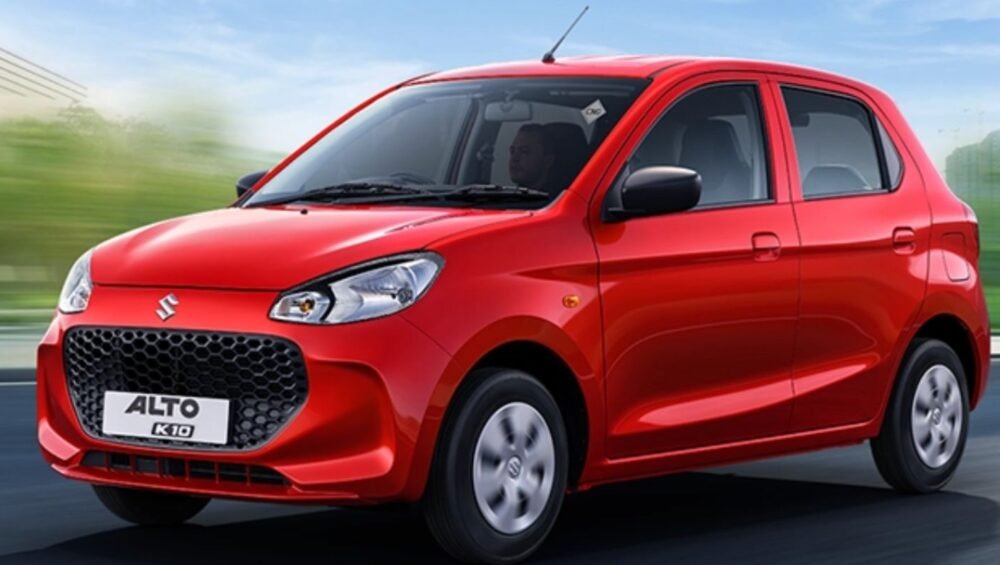GST Tax on Small Cars to Likely be Reduced in India – Key Details
The Indian automobile industry is bracing for a significant policy change with the upcoming Goods and Services Tax (GST) reforms that could bring relief to small car buyers across the country. As announced by Prime Minister Narendra Modi during his Independence Day address, the GST regime will be simplified from multiple tax slabs into just two fixed rates: 5 percent and 18 percent. This reform stands to reduce the current tax burden on small hatchbacks, which are expected to move from the existing 28 percent tax slab to the more favorable 18 percent slab, making small cars markedly more affordable.
Overview of the GST Reform and Its Impact on Small Cars
Currently, small cars in India attract a GST rate of 28 percent plus a 1 percent cess. This high tax rate is a significant contributor to their increased ex-showroom prices, dampening demand in a segment once considered the backbone of the Indian auto industry. On the other hand, larger SUVs face GST in the range of 43 to 50 percent, while electric vehicles (EVs) benefit from the lowest GST ceiling of 5 percent.
The forthcoming reforms aim to eliminate the 12 percent and 28 percent tax slabs altogether, leaving just two primary GST rates: 5 percent and 18 percent for most goods and services, with a special 40 percent slab proposed for luxury items, including high-end cars and SUVs.
Expected Benefits for Small Car Buyers
With the new framework, small cars—typically defined as vehicles under 4 metres in length and powered by petrol, CNG, or LPG engines up to 1,200 cc—are expected to fall under the 18 percent GST slab. This substantial adjustment could lead to a reduction in ex-showroom prices by approximately 12-13 percent, which translates to a price cut of roughly ₹20,000 to ₹25,000 per vehicle.
According to VG Ramakrishnan, managing partner at Avanteum Advisors, “If there is an 11 percent reduction in GST, the ex-showroom price of small cars will come down by 12–12.5 percent. Even if the absolute cut is in the range of Rs 20,000–25,000, it will be a huge positive on consumer sentiments.”
Such a move comes as a much-needed boost, especially since the small car segment has been witnessing a steady decline, posting a negative year-on-year growth of 13 percent in FY25, with volumes falling to around 1 million units. This decline is exacerbated by rising vehicle prices that have put entry-level consumers out of reach, as noted by Partho Banerjee, senior executive officer at Maruti Suzuki, India’s market leader.
Effect on Related Segments
Apart from traditional small hatchbacks, this tax reduction is expected to benefit micro-SUV models like the Tata Punch and Hyundai Exter, thereby broadening the affordability landscape to other entry-level compact vehicles. This is particularly crucial as compact SUVs have enjoyed steady growth, recording a 10 percent year-on-year increase with sales surpassing 2.35 million units in FY25.
The Bigger Picture: GST Simplification and Industry Outlook
The GST council is expected to finalize these reforms in its upcoming meeting scheduled for the third week of September. The government’s objective is to reduce the overall tax burden and simplify the GST structure, which has long been criticized for its complexity.
For luxury SUVs and premium cars, a distinct 40 percent tax slab is anticipated, a slight reduction from the current 43-50 percent band. Meanwhile, electric vehicles will maintain their favorable 5 percent GST status, reinforcing India’s push toward electric mobility.
Conclusion
The impending GST reforms hold promise for reviving the small car segment in India by making it more accessible to the price-sensitive mainstream customer base. This move is expected to restore consumer confidence and spur demand in a segment that has been facing headwinds over the past few years. By simplifying the tax structure and reducing rates for small cars, the government aims to encourage vehicle ownership and stimulate growth in passenger vehicle sales, all while supporting its broader goals of sustainability and economic development.
Buyers and manufacturers alike will be eagerly watching the GST council’s decisions, which are poised to reshape the fortunes of India’s small car market ahead of the festive season—a timely gift, indeed.
Would you like me to prepare a detailed breakdown of expected price changes or analyze how this reform could impact specific car models?# GST Tax on Small Cars to Likely Be Reduced in India – Key Details
The Indian automobile industry is on the cusp of significant change as the upcoming Goods and Services Tax (GST) reforms promise to simplify the tax structure and reduce the burden on small car buyers. Prime Minister Narendra Modi recently announced that GST slabs will be rationalized into two fixed rates—5 percent and 18 percent—eliminating the current multiple tax bands. For the auto sector, this means a big relief for small hatchbacks, which currently attract a 28 percent GST but are expected to be shifted to the 18 percent slab, making these cars more affordable for buyers.
What the New GST Reforms Mean for Small Cars
Small cars in India currently face a GST rate of 28 percent plus a 1 percent cess, contributing to rising prices and declining sales in this segment. The planned GST reforms will scrap the 28 percent band, placing small cars (typically those under 4 metres in length and with engines up to 1,200 cc running on petrol, CNG, or LPG) under the 18 percent slab.
As PM Modi said in his Independence Day speech, the reforms aim “to reduce the tax burden across the country” and will be a “gift ahead of Diwali.” This strategic move could reduce the ex-showroom prices of small hatchbacks by up to 12-13 percent, equivalent to savings of ₹20,000 to ₹25,000 per vehicle.
Industry and Expert Insights
VG Ramakrishnan, Managing Partner at Avanteum Advisors, highlighted the impact: “If there is an 11 percent reduction in GST, the ex-showroom price of small cars will come down by 12-12.5 percent. Even a price cut of ₹20,000-₹25,000 will be a huge positive for consumer sentiment.” The final approval on this is expected during the GST council meeting in the third week of September.
Luxury SUVs and premium cars will likely fall under a proposed 40 percent tax slab (reduced from the current 43-50 percent range), while electric vehicles will continue enjoying the lowest GST rate of 5 percent.
Impact on Sales and Market Dynamics
The small car segment, once a cornerstone of the Indian auto market, has seen a 13 percent year-on-year decline in FY25, with total sales dropping to about 1 million units. This decline is largely due to rising prices pushing first-time buyers away. Partho Banerjee, Senior Executive Officer at Maruti Suzuki, noted, “Entry-level consumers are not able to afford cars because of high prices.”
By lowering GST, carmakers can reduce prices, rekindling demand for popular small cars. Additionally, affordable micro-SUVs like the Tata Punch and Hyundai Exter will also benefit, broadening the scope of the price correction.
Interestingly, while small cars have seen declining numbers, compact SUVs grew by 10 percent year-on-year in FY25, selling over 2.35 million units.
Conclusion
The government’s planned GST reforms are set to breathe new life into the ailing small car segment by making vehicles more affordable and accessible. Simplifying GST slabs and reducing rates for small vehicles not only helps consumers financially but also supports the auto industry’s growth and sustainability goals.
Buyers can look forward to improved affordability just in time for the festive season, potentially sparking a revival in Indian small car sales and shifting market dynamics toward a more balanced portfolio of vehicles.





